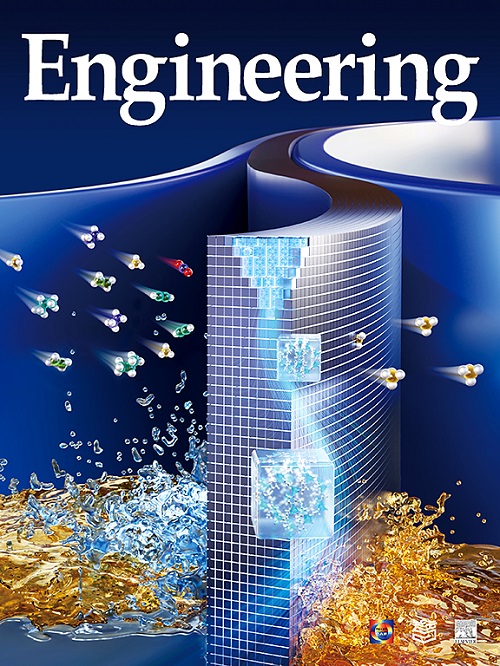Performance of the First 80-kA HTS CICC for High-Field Application in Future Fusion Reactors
IF 10.1
1区 工程技术
Q1 ENGINEERING, MULTIDISCIPLINARY
引用次数: 0
Abstract
A promising way to realize controlled nuclear fusion involves the use of magnetic fields to control and confine the hot plasma configuration. This approach requires superconductor magnets operating above 15 T for the next generation of fusion devices. Due to their high in-field transport current capacity, rare-Earth barium copper oxide (REBCO) coated conductors are promising materials for manufacturing of cable-in-conduit conductors (CICCs) for fusion. However, the high-aspect-ratio geometry makes it difficult to find a multi-tape CICC configuration that fulfills the high engineering current density requirements while retaining enough flexibility for winding large-scale magnets. Moreover, the multilayer structure and inherent brittleness make the REBCO tapes susceptible to degradation during CICC manufacturing and operation. For more than a decade, the development of a reliable REBCO-based CICC that can sustain the huge combined mechanical, thermal, and Lorentz loads without degradation has been ongoing, albeit with limited progress. In this paper, we report on a prototype REBCO CICC that can withstand an applied cyclic Lorentz load of at least 830 kN·m−1, corresponding to a transport current of 80 kA at 10.85 T and 4.5 K. To our knowledge, this is the highest load achieved to date. The CICC uses 288 tapes wound into six strengthened sub-cables, making it capable of having a current sharing temperature, Tcs, of around 39 and 20 K when operated under 10.85 T with a current of 40 and 80 kA, respectively. Scaled to a 20-T peak field and 46.5-kA transport current, this provides a temperature margin of over 10 K with respect to an operating temperature of 4.5 K. In addition, no perceptible transport current performance degradation was observed after cyclic Lorentz loading, cyclic warm-up/cool-down (WUCD), and quench campaigns. The proposed REBCO CICC is a milestone in the development of high-temperature superconductors for large-scale and high-field magnet applications.用于未来聚变反应堆高场应用的首个80ka HTS CICC的性能
实现可控核聚变的一种很有前途的方法是利用磁场来控制和限制热等离子体的结构。这种方法要求下一代核聚变装置的超导体磁体运行在15t以上。稀土钡氧化铜(REBCO)涂层导体由于具有较高的场内传输电流容量,是制造用于聚变的管内电缆导体(ccic)的有前途的材料。然而,高纵横比的几何形状使得很难找到一种多带CICC配置,既能满足高工程电流密度要求,又能保持缠绕大型磁铁的足够灵活性。此外,多层结构和固有的脆性使REBCO带在CICC制造和使用过程中容易退化。十多年来,尽管进展有限,但可靠的基于rebco的CICC的开发一直在进行中,该CICC可以承受巨大的机械、热和洛伦兹载荷而不会退化。在本文中,我们报道了一个原型REBCO CICC,它可以承受至少830 kN·m−1的循环洛伦兹载荷,对应于10.85 T和4.5 K时80 kA的输运电流。据我们所知,这是迄今为止达到的最高负荷。CICC使用288条胶带缠绕成6条加强的子电缆,使其能够在10.85 T下工作,电流分别为40和80 kA时具有约39和20 K的电流共享温度。缩放到20 t峰值场和46.5 ka传输电流,相对于4.5 K的工作温度,这提供了超过10 K的温度裕度。此外,在循环洛伦兹加载、循环预热/冷却(WUCD)和淬火运动后,没有观察到明显的输运电流性能下降。提出的REBCO CICC是用于大规模和高场磁体应用的高温超导体发展的里程碑。
本文章由计算机程序翻译,如有差异,请以英文原文为准。
求助全文
约1分钟内获得全文
求助全文
来源期刊

Engineering
Environmental Science-Environmental Engineering
自引率
1.60%
发文量
335
审稿时长
35 days
期刊介绍:
Engineering, an international open-access journal initiated by the Chinese Academy of Engineering (CAE) in 2015, serves as a distinguished platform for disseminating cutting-edge advancements in engineering R&D, sharing major research outputs, and highlighting key achievements worldwide. The journal's objectives encompass reporting progress in engineering science, fostering discussions on hot topics, addressing areas of interest, challenges, and prospects in engineering development, while considering human and environmental well-being and ethics in engineering. It aims to inspire breakthroughs and innovations with profound economic and social significance, propelling them to advanced international standards and transforming them into a new productive force. Ultimately, this endeavor seeks to bring about positive changes globally, benefit humanity, and shape a new future.
 求助内容:
求助内容: 应助结果提醒方式:
应助结果提醒方式:


